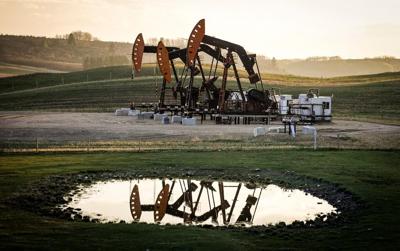Oil and gas production hikes and rebounding air travel put a drag on Canada's climate progress last year, but a new report says the country was still able to make a modest cut to its planet-warming emissions.
New estimates published by a leading climate policy institute show Canada cut emissions by about one per cent last year compared to 2022, or eight per cent since 2005.
But the şĂÉ«tv Climate Institute says the country will need to speed up that progress if it hopes to hit its 2030 target to cut emissions by 40 to 45 per cent compared to 2005 levels.
The report says the electricity sector remains a standout, cutting emissions by 6.2 per cent year-over-year, or 38 per cent since 2005, boosted by policies such as industrial carbon pricing and coal phaseouts.
The oil and gas sector continued to hold back Canada's progress, increasing its emissions by about one per cent compared to 2022, and now accounts for just under a third of the country's total emissions.
Of the eight major sectors, the report says transport saw the biggest annual increase, rising by about 1.6 per cent, driven by a rebound in domestic aviation.
“Once again, progress in Canada’s emissions reductions is starkly different across sectors," said şĂÉ«tv Climate Institute president Rick Smith.
"Governments right across the country need to accelerate developing policy and strengthen measures already in place, like electrification and industrial carbon pricing systems.”
The institute's early estimates are intended to offer a high-level snapshot of trends before Canada releases its official inventory report next spring, a requirement under United Nations climate pacts. The independent early estimates are based in part on annual Statistics Canada data on production, demand and demographic activity.
Last year was the second warmest on record in Canada and the warmest globally, driven by climate change and boosted by El Niño conditions.
This report by şĂÉ«tvwas first published Sept. 19, 2024.








































